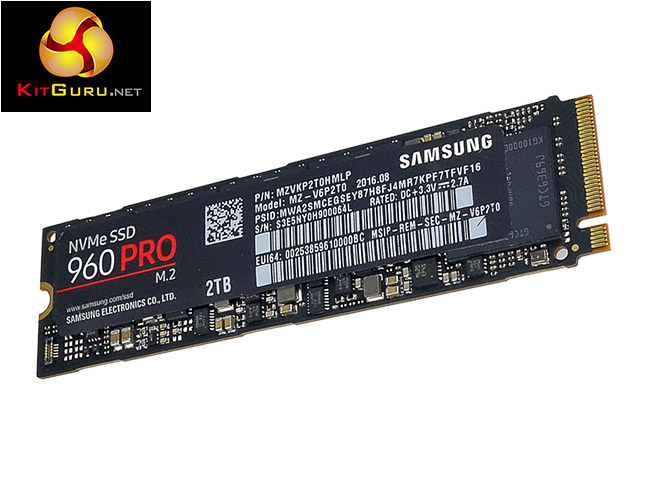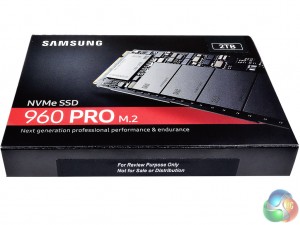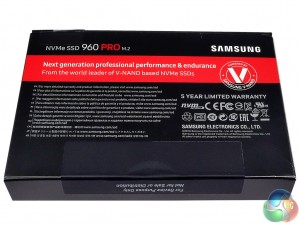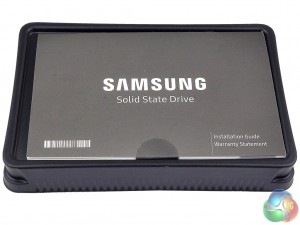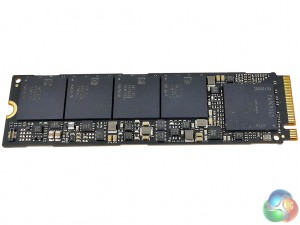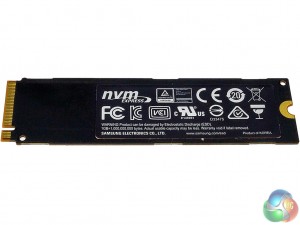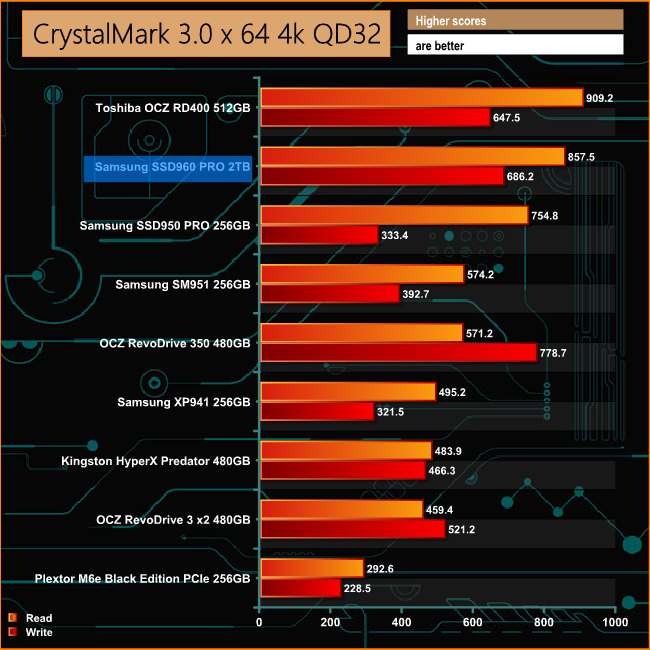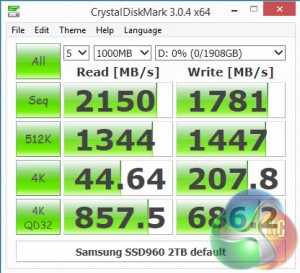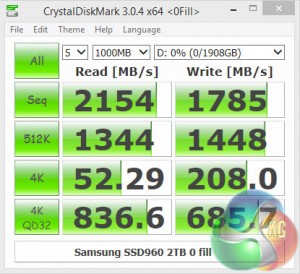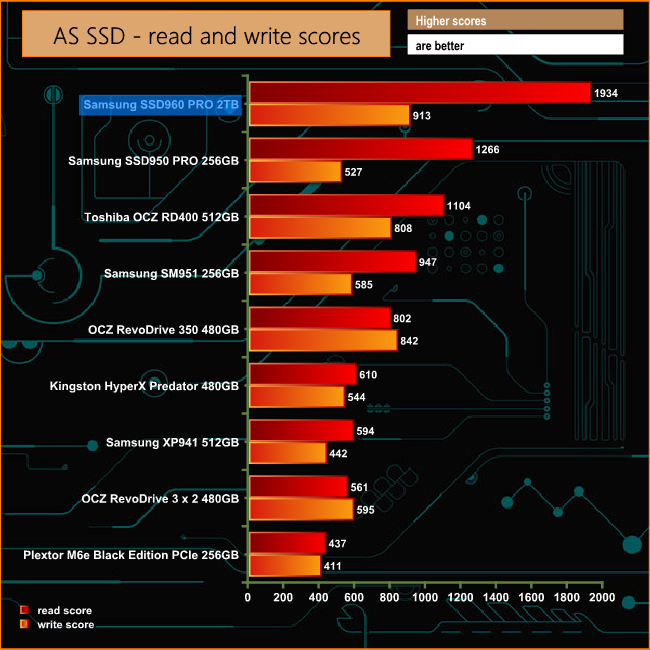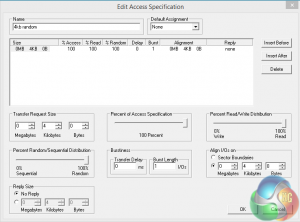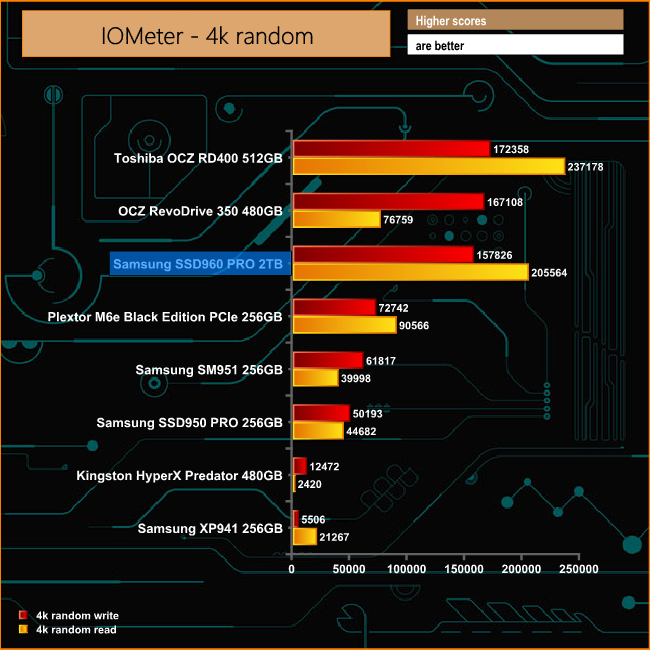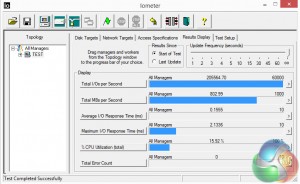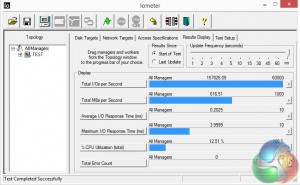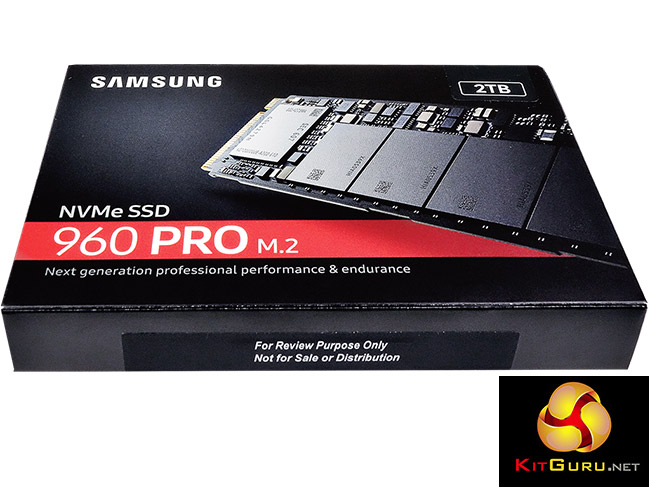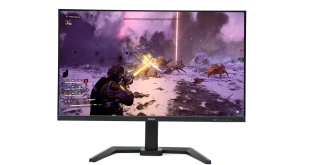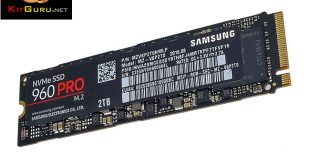
Samsung's latest high-end flagship SSD is the SSD960 PRO which uses Samsung's 3rd generation 256Gb 48-layer 2-bit MLC V-NAND together with a new controller called Polaris. There will also be a new updated version of Samsung's Magician software supporting the drive coming in November.
Like the SSD950 PRO that preceded it, the SSD960 PRO is built on a 2280 M.2 form factor, supports NVMe (Non-Volatile Memory Express) and uses a PCIe Gen3 x4 interface. The drive is available in 512GB, 1TB and, thanks to the density of its 48-layer V-NAND, 2TB capacities. The flagship 2TB drive is the highest capacity consumer M.2 drive available at the time of launch.
Getting 2TB of capacity on a 2280 format M.2 is a pretty impressive feat. Samsung have used what they call a 4-Landing design, in other words using four NAND packages on one side of the PCB to make up the drive's capacity. To get a 512GB NAND package Samsung uses Hexadecimal Die Packaging (HDP) to stack 16 32GB chips on top of each other to form a 512GB package. Samsung are the first company to employ HDP for a client-based SSD.
With four NAND packages and a controller, there's no room for a cache chip on the board, so Samsung has come with the nifty idea of stacking the cache IC (in the case of the 2TB drive it's a 2GB LP-DDR3 chip) on top of the controller using what they term a Package on Package (POP) design.
The new Polaris controller is a five core 8-channel design rather than the 950 PRO's three core design. One of the five cores' sole job is to look after host communication leaving the other four to manage the Flash.
Needless to say, the combination of a PCIe Gen3 x4 interface, NVMe architecture and a new controller gives the SSD960 some impressive performance figures. Well, that's a bit of an understatement to say the least as Samsung quote Sequential read/write figures for the 2TB drive as 3,500MB/s and 2,100MB/s respectively. Incidentally, they are the same figures as for both the 512GB and 1TB drive.
Maximum quoted random read/write performance for the 2TB drive gets a little complicated as Samsung has quoted figures for both Queue Depth 1/Thread 1 (up to 50,000 IOPS Read and 14,000 IOPS write) and QD32/Thread 4 (up to 440,000 IOPS read and 360,000 IOPS write). The 1TB drive has the same figures while the 512GB drive sees the QD32 reads and writes drop to 330,000 IOPS.
The 2TB drive endurance is rated at 1,200TBW and Samsung back it with a 5-year warranty.
Physical Specifications:
Usable Capacities: 512GB, 1TB, 2TB
NAND Components: Samsung 48-layer MLC V-NAND
Interface: PCIe Gen3 x4 (NVMe)
Form Factor: M.2
NAND Controller: Samsung Polaris
Dimensions: 80.15 x 22.15 x 2.38mm
Weight: 9g
Firmware Version 1B6QCXP7
The front of the box has a part image of the drive with a sticker displaying the capacity. The back of the box has the length of warranty displayed along with multilingual notes informing that more detailed warranty and product information is available on Samsung's website.
The only thing bundled with the drive is an installation and warranty guide.
With the 4-Landing design, the drive's components are all built onto one side of the PCB and all are in-house Samsung designs. The four 512GB NAND packages sit alongside the Polaris controller which has the 2GB LP-DDR3 cache IC built on top of it.
The launch of the 960 PRO sees a new updated version of Samsung's Magician SSD management software. The new version (which currently only supports the SSD960) has been graphically enhanced with a better interface to make it easier to use. It includes two new features – Secure File Erase and Magic Vault.
Secure File Erase does exactly what it says on the tin; individual files can be selection for deletion, and once deleted cannot be restored. With Magic Vault, an area of the drive can be set aside and password-protected to store sensitive information. Once set up, the Magic Vault area of the drive becomes invisible to the OS.
This new version of the software will not be available until November but we saw screen shots of it at the 2016 Samsung SSD Summit and its new interface does look much easier to use.
For testing, the drives are all wiped and reset to factory settings by HDDerase V4. We try to use free or easily available programs and some real world testing so you can compare our findings against your own system. This is a good way to measure potential upgrade benefits.
We tested the drive using the native Windows NVMe driver as Samsung's latest 2.0 NVMe driver wasn't available at the time we tested the drive. We would anticipate a performance increase when Samsung's driver is made available.
Main system:
Intel Core i7 4790K with 16GB of DDR3-2133 RAM, Sapphire R9 390 Nitro and an ASRock Z97 Extreme 6 motherboard. Windows 8.1 is used as we need to keep OS consistency with comparison SSDs that we no longer have access to.
Other drives
Kingston HyperX Predator 480GB
OCZ RevoDrive 350 480GB
OCZ RevoDrive 3 x2 480GB
Plextor M6e Black Edition PCIe 256GB
Samsung SSD950 PRO 256GB
Samsung SM951 256GB
Samsung XP941 512GB
Toshiba OCZ RD400 512GB
Software:
Atto Disk Benchmark.
CrystalMark 3.0.3.
AS SSD.
IOMeter
All our results were achieved by running each test five times with every configuration this ensures that any glitches are removed from the results. Trim is confirmed as running by typing fsutil behavior query disabledeletenotify into the command line. A response of disabledeletenotify =0 confirms TRIM is active.
Crystalmark is a useful benchmark to measure theoretical performance levels of hard drives and SSD’s. We are using V3.0.3.
The SSD960 PRO may be a little slower than Toshiba's RD400 when it comes to 4K QD32 reads but it offers better write performance.
However, it leaves the previous generation SSD950 PRO completely in the shade when it comes to both reads and in particularly writes, where it has over twice the performance of the SSD950 PRO.
Looking at both the default and 0 fill results, the Polaris controller doesn't seem to have a preference in the type of data it's asked to work with.
The ATTO Disk Benchmark performance measurement tool is compatible with Microsoft Windows. Measure your storage systems performance with various transfer sizes and test lengths for reads and writes. Several options are available to customize your performance measurement including queue depth, overlapped I/O and even a comparison mode with the option to run continuously.
Use ATTO Disk Benchmark to test any manufacturers RAID controllers, storage controllers, host adapters, hard drives and SSD drives and notice that ATTO products will consistently provide the highest level of performance to your storage.

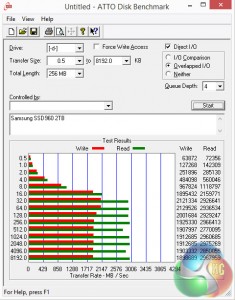
When it comes to Sequential read/write performance, the SSD960 PRO is the new king of the hill by quite some margin in both reads and writes.
AS SSD is a great free tool designed just for benching Solid State Drives. It performs an array of sequential read and write tests, as well as random read and write tests with sequential access times over a portion of the drive.
AS SSD includes a sub suite of benchmarks with various file pattern algorithms but this is difficult in trying to judge accurate performance figures.
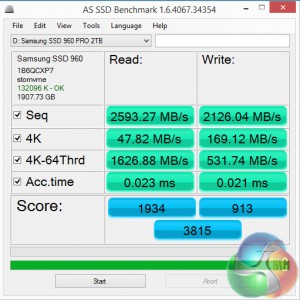
Once again the SSD960 PRO goes straight to the top of the chart, displacing the SSD950 PRO, with the highest read and write scores we have seen so far for an SSD.
IOMeter is another open source synthetic benchmarking tool which is able to simulate the various loads placed on hard drive and solid state drive technology.
We test with both random read and write 4k tests, as shown above. There are many ways to measure the IOPS performance of a Solid State Drive, so our results will sometimes differ from manufacturer’s quoted ratings. We do test all drives in exactly the same way, so the results are directly comparable.
In the IOMeter 4K random tests, the drive produced a read score of 205,564 IOPS and writes came in at 157,826 IOPS which fall somewhere in-between the two sets of official figures for the drive.
While the results may be some way short of the top end figures that Samsung quote (due to their differing test procedure), they completely eclipse the performance of the preceding SSD950 PRO drive.
To test real life performance of a drive we use a mix of folder/file types and by using the FastCopy utility (which gives a time as well as MB/s result) we record the performance of drive reading from & writing to a 256GB Samsung SSD850 PRO.
60GB Steam folder – 29,521 files.
50GB File folder – 28,523 files.
12GB Movie folder – 24 files (mix of Blu-ray and 4K files).
10GB Photo folder – 621 files (mix of .png, raw and .jpeg images).
10GB Audio folder – 1,483 files (mix of mp3 and .flac files).
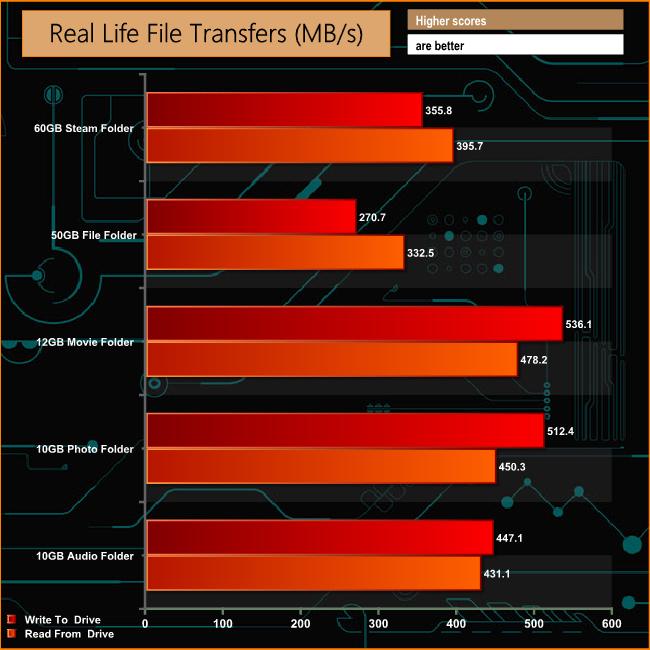
As might be expected, the SSD960 PRO dealt with our real life tests without any problems, although the drive's performance did drop off when dealing with the small bity files of the 50GB File folder test.
Samsung's 48-layer V-NAND shows the capacity potential of the various flavours of 3D NAND that are in or soon will be in production. and further down the road there is QLC (quad-level cell) technology with the prospect of even larger capacities. There are huge 2.5in SSD drives already (Samsung's own 16TB PM1633a for example) but to be able to cram 2TB of storage onto something as small as a 2280 format M.2 drive is still mightily impressive.
The drive has some advanced thinking in its design – from the Hexadecimal Die Packaging (HDP) that Samsung uses to stack up the layers inside the NAND to get very dense packages, to the novel idea of stacking the cache IC on top of the controller.
Details about the new Polaris controller are pretty thin on the ground at this time, but what is known is that its a 5 core IC with one of its cores dedicated to host communications leaving the other four cores to deal solely with Flash management. The drive's performance is a testimony to the new chip's design.
To say that the SSD960 PRO is a fast drive is a bit of an understatement – it really flies along. Samsung quote Sequential read/write figures for the 2TB drive of 3,500MB/s and 2,100MB/s, respectively, and although we couldn't quite reach those figures during testing with the Windows NVMe driver, at 2,975MB/s for reads and 1,912MB/s for writes in the ATTO benchmark, it's the fastest drive we have seen to date by quite some margin. It is also much faster by some magnitude, particularly when it comes to write performance, than its predecessor the SSD950 PRO. It's the same story with the random 4K performance – the drive completely trounces the older SSD in both reads and, again, particularly write performance.
There were some thermal issues with the SSD950 PRO when it was pushed hard. To get around any potential thermal problems with the SSD960 PRO, Samsung has come up with the novel idea of using a heat-spreading label on the rear of the drive. This label may look like a pretty standard label but it is made up of 6 layers. The all-important copper-based heat spreader layer lies between two layers of adhesive. With this label, the dynamic thermal guard (DTG) trigger point has improved by around 30 seconds compared to the DTG trigger of the SSD950 PRO
The drive also supports both AES 256-bit encryption and TCG/Opal to secure any data.
The 2TB version of the SSD960 PRO is priced at $1299 in the US. Current UK pricing is £1249.99 at Overclockers UK. The 512GB version is £329.99 and the 1TB variant is £599.99.
Discuss on our Facebook page HERE.
Pros
- Performance
- Huge capacity for an M.2 drive
- 5-year warranty
Cons
- Performance comes at a cost
Kitguru says: Samsung showed what an M.2 SSD was capable of with the SSD950 PRO, but the SSD960 PRO takes it to a whole new level in terms of capacity and performance.
Be sure to check out our sponsors store EKWB here
 KitGuru KitGuru.net – Tech News | Hardware News | Hardware Reviews | IOS | Mobile | Gaming | Graphics Cards
KitGuru KitGuru.net – Tech News | Hardware News | Hardware Reviews | IOS | Mobile | Gaming | Graphics Cards


